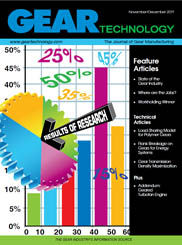This paper presents an original method to compute the loaded mechanical behavior of polymer gears. Polymer
gears can be used without lubricant, have quieter mesh, are more resistant to corrosion, and are lighter in weight.
Therefore their application fields are continually increasing. Nevertheless, the mechanical behavior of polymer materials is very complex because it depends on time, history of displacement and temperature. In addition, for several polymers, humidity is another factor to be taken into account. The particular case of polyamide 6.6 is studied in this paper.
